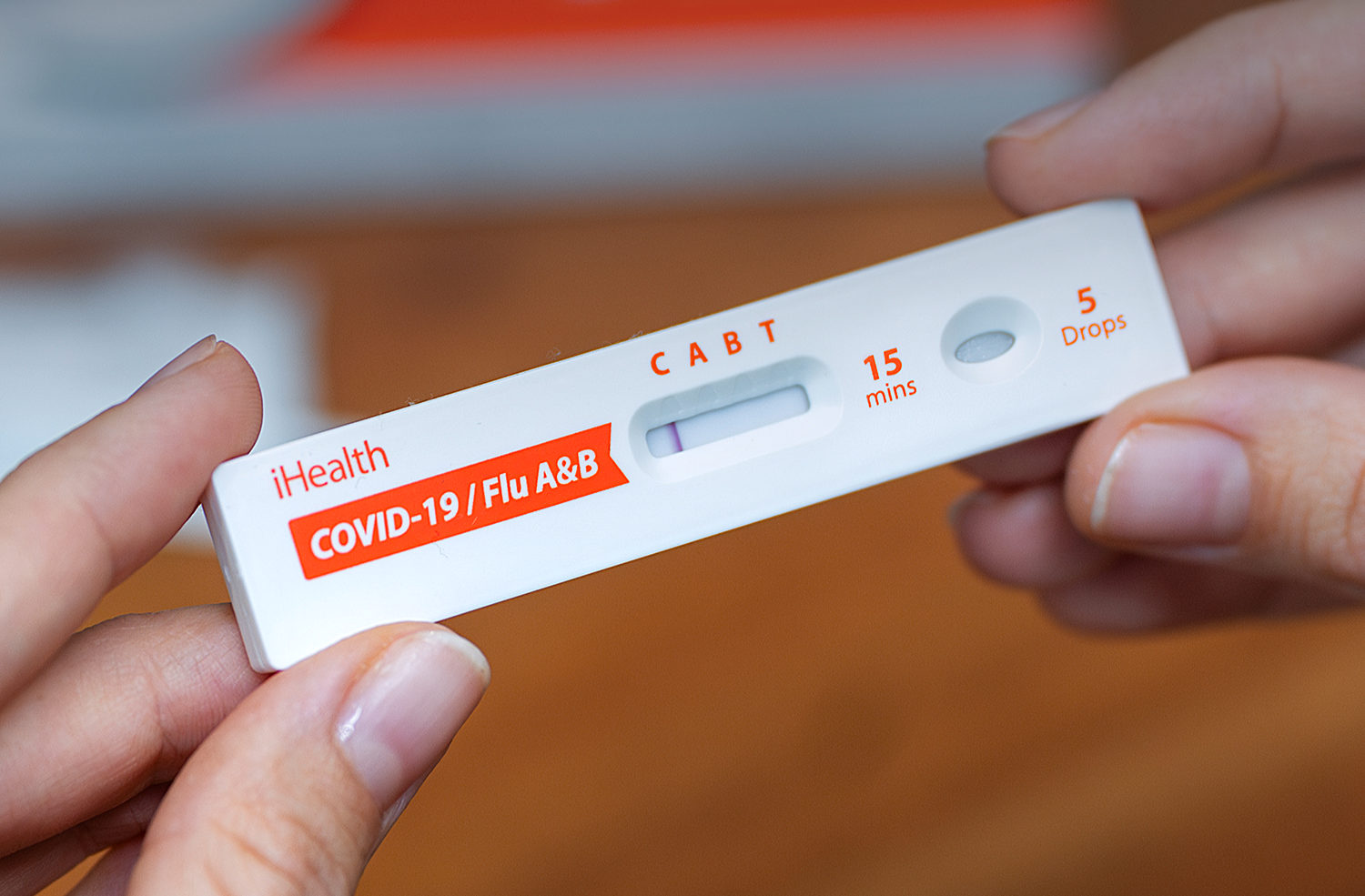Flu A, Flu B, and COVID-19: Why It’s Important to Know the Difference
With flu season here and COVID-19 still in the mix, many of us are familiar with symptoms like fever, cough, and body aches. But when these symptoms hit, how can you tell whether it’s Flu A, Flu B, or COVID-19?
Is there a definitive way to know if that scratchy throat or fever is due to Flu A, Flu B, or COVID-19? The short answer is yes, but these respiratory illnesses share many symptoms, making it difficult to tell them apart.
Understanding the differences is crucial, not just for getting the right treatment, but also for stopping the spread and protecting those most vulnerable.
In this post, we’ll break down the key distinctions between Flu A, Flu B, and COVID-19 and why early testing is essential for staying ahead of these viruses.
UNDERSTANDING THE DIFFERENCES BETWEEN INFLUENZA A, B, AND COVID-19

Key Differences and Similarities between Influenza Virus A & B
Flu A and Flu B are the two main strains of the influenza virus that return yearly, especially in colder months. While they share common symptoms like fever, sore throat, chills, body aches, and fatigue, there are key differences:
- Flu A is typically more severe and responsible for larger outbreaks, including flu pandemics.
- Flu B tends to be milder and is not as likely to cause widespread epidemics.
Both flu types can cause significant illness, but their impact varies depending on the strain and individual health factors.
COVID-19 & The Risks Associated with Long COVID
Like the flu, COVID-19 can cause fever, fatigue, and cough. However, COVID-19 symptoms may also include loss of taste or smell, which is rare with the flu. Some individuals experience mild symptoms, while others face severe illness or long-term complications known as Long COVID.
Certain groups are at higher risk for severe outcomes, including:
- Pregnant women
- Older adults (65+)
- People with underlying health conditions (e.g., heart disease, diabetes)
- Immunocompromised individuals
- Minority groups facing healthcare access challenges
- Healthcare & essential workers with higher exposure risk
Since symptoms alone can’t confirm which virus you have, testing is the best way to know for sure.
WHY IT’S CRITICAL TO IDENTIFY THE RIGHT VIRUS

Shop Our Flu A/B & COVID Tests
Tailored Treatment Options
Getting the right diagnosis means getting the right treatment. Flu A and Flu B may be treated with antivirals like Tamiflu, while COVID-19 could require treatments like Paxlovid, monoclonal antibodies, or supportive care. Testing ensures you receive the right care as soon as possible.
Different Public Health Protocols
Public health measures for COVID-19 and Flu A/B differ:
- COVID-19 often requires isolation to reduce spread.
- Flu cases may have less strict quarantine guidelines.
Misidentifying the virus could lead to incorrect precautions, increasing the risk of spreading illness.
Different Public Health Protocols
Both viruses pose risks, but complications differ. The flu can lead to pneumonia and secondary infections, while COVID-19 has been linked to severe respiratory issues, organ damage, and Long COVID. Accurate testing helps assess risks early.
COVID and Flu Complications Can Vary
Each virus affects people differently, especially vulnerable groups like the elderly, children, and those with weakened immune systems. The flu can lead to pneumonia and other complications, but COVID-19 has a higher chance of causing severe respiratory issues or even long-term organ damage. Getting an accurate diagnosis helps you assess these risks and manage complications early.
THE ROLE OF TESTING WHEN FLU SYMPTOMS APPEAR
The only way to confirm whether you have Flu A, Flu B, or COVID-19 is through testing. Rapid antigen tests, PCR tests, and combo tests provide clear answers so you can act fast.
🚨 Shop Our 3-in-1 iHealth COVID, Flu A, and Flu B Testing Kits! 🚨
Our at-home 3-in-1 test kit delivers fast, accurate results in just 15 minutes. No doctor visits are required! Safe for everyone ages 2 and up, this easy-to-use kit helps you get the right diagnosis and treatment without delay.
PREVENTION STRATEGIES FOR FLU AND COVID-19
The good news? There are effective ways to protect yourself from both flu and COVID-19. The best defense against Flu A, Flu B, and COVID-19 is prevention:
✔ Get vaccinated – Annual flu shots and updated COVID-19 vaccines provide strong protection.
✔ Wash your hands frequently to reduce virus spread.
✔ Wear a mask in crowded areas during peak flu season.
✔ Practice social distancing when needed.
By taking these simple precautions, you can protect yourself and those around you.
WE HAVE TESTING KITS TO HELP YOU WITH FLU & COVID DETECTION

With flu season in full swing and COVID-19 still a concern, knowing which virus you have matters. Early detection leads to faster treatment and prevents further spread.
🛒 Shop Our 3-in-1 iHealth COVID, Flu A, and Flu B Over-The-Counter Test Now!
✅ Fast & Accurate—Results in just 15 minutes
✅ Convenient—Test at home without a doctor’s visit
✅ Safe for all ages—including young children
Stay proactive. Get tested, stay updated on vaccines, and take steps to protect your health this season!
==> Check out our 3-in-1 iHealth COVID, Flu A, and Flu B Over-The-Counter Test Now!









Leave a comment